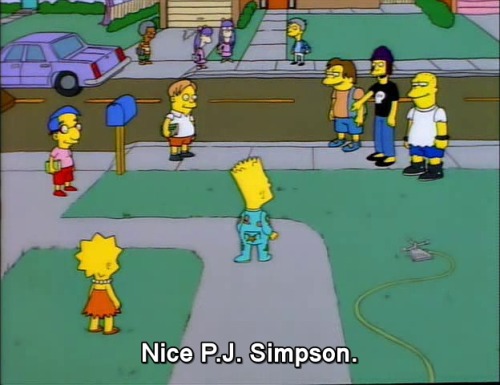Smparticle2 - Untitled

More Posts from Smparticle2 and Others







To keep pain in check, count down
Diverse cognitive strategies affect our perception of pain. Studies by LMU neuroscientist Enrico Schulz and colleagues have linked the phenomenon to the coordinated activity of neural circuits located in different brain areas.
Is the heat still bearable, or should I take my hand off the hotplate? Before the brain can react appropriately to pain, it must evaluate and integrate sensory, cognitive and emotional factors that modulate the perception and processing of the sensation itself. This task requires the exchange of information between different regions of the brain. New studies have confirmed that there is a link between the subjective experience of pain and the relative levels of neural activity in functional structures in various sectors of the brain. However, these investigations have been carried out primarily in contexts in which the perception of pain was intensified either by emotional factors or by consciously focusing attention on the painful stimulus. Now, LMU neuroscientist Enrico Schulz, in collaboration with colleagues at the University of Oxford, has asked how cognitive strategies that affect one’s subjective perception of pain influence the patterns of neural activity in the brain.
In the study, 20 experimental subjects were exposed to a painful cold stimulus. They were asked to adopt one of three approaches to attenuating the pain: (a) counting down from 1000 in steps of 7, (b) thinking of something pleasant or beautiful, and (c) persuading themselves – by means of autosuggestion – that the stimulus was not really that bad. During the experimental sessions, the subjects were hooked up to a 7T magnetic resonance imaging (MRI) scanner to visualise the patterns of neural activity in the brain, which were later analysed in detail.
In order to assess the efficacy of the different coping strategies, participants were also asked to evaluate the subjective intensity of the pain on a scale of 0 to 100. The results revealed that the countdown strategy was the most effective of the three methods. “This task obviously requires such a high level of concentration that it distracts the subject’s attention significantly from the sensation of pain. In fact some of our subjects managed to reduce the perceived intensity of pain by 50%,” says Schulz. “One participant later reported that she had successfully adopted the strategy during the most painful phase of childbirth.”
In a previous paper published in the journal Cortex in 2019, the same team had already shown that all three strategies help to attenuate the perception of pain, and that each strategy evoked a different pattern of neural activity. In the new study, Schulz and his collaborators carried out a more detailed analysis of the MRI scans, for which they divided the brain into 360 regions. “Our aim was to determine which areas in the brain must work together in order to successfully reduce the perceived intensity of the pain,” Schulz explains. “Interestingly, no single region or network that is activated by all three strategies could be identified. Instead, under each experimental condition, neural circuits in different brain regions act in concert to varying extents.”
The attenuation of pain is clearly a highly complex process, which requires a cooperative response that involves many regions distributed throughout the brain. Analysis of the response to the countdown technique revealed close coordination between different parts of the insular cortex, among other patterns. The imaginal distraction method, i.e. calling something picturesque or otherwise pleasing to mind, works only when it evokes intensive flows of information between the frontal lobes. Since these structures are known to be important control centres in the brain, the authors believe that engagement of the imaginative faculty may require a greater degree of control, because the brain needs to search through more ‘compartments’ – to find the right memory traces, for instance. Comparatively speaking, counting backwards stepwise – even in such awkward steps – is likely to be a more highly constrained task. “To cope with pain, the brain makes use of a recipe that also works well in other contexts,” says Anne Stankewitz, a co-author of the new paper: “success depends on effective teamwork.” Her team now plans to test whether their latest results can be usefully applied to patients with chronic pain.
Cool! Go theoretical -and experimental-physics!

Heating up exotic topological insulators
Fashion is changing in the avant-garde world of next-generation computer component materials. Traditional semiconductors like silicon are releasing their last new lines. Exotic materials called topological insulators (TIs) are on their way in. And when it comes to cool, nitrogen is the new helium.
This was clearly on display in a novel experiment at the National Institute of Standards and Technology (NIST) that was performed by a multi-institutional collaboration including UCLA, NIST and the Beijing Institute of Technology in China.
Topological insulators are a new class of materials that were discovered less than a decade ago after earlier theoretical work, recognized in the 2016 Nobel Prize in physics, predicted they could exist. The materials are electrical insulators on the inside and they conduct electricity on the outer surface. They are exciting to computer designers because electric current travels along them without shedding heat, meaning components made from them could reduce the high heat production that plagues modern computers. They also might be harnessed one day in quantum computers, which would exploit less familiar properties of electrons, such as their spin, to make calculations in entirely new ways. When TIs conduct electricity, all of the electrons flowing in one direction have the same spin, a useful property that quantum computer designers could harness.
Read more.
This supercapacitor battery can be recharged 30,000 times

A thin, flexible supercapacitor boasts high energy and power densities. Credit: University of Central Florida
Everyone and anyone with a smartphone know it is not long before your phone holds a charge for less and less time as the battery begins to degrade. But new research by scientists at the NanoScience Technology Center at the University of Central Florida (UCF), USA, could change that. The team have developed a new method for producing flexible supercapacitors that can store greater amounts of energy and can be recharged over 30,000 times without degradation. This new method could transform technology such as electric vehicles and mobile phones in the future.
‘If you were to replace the batteries with these supercapacitors, you could charge your mobile phone in a few seconds and you wouldn’t need to charge it again for over a week,’ said University of Central Florida researcher Nitin Choudhary.
The UCF team has attempted to apply newly discovered 2D materials that measure just a few atoms thick to supercapacitors. Other scientists have also tried formulations with other 2D materials including graphene, but had only limited success. The new supercapacitors are composed of millions of nanometre-thick wires coated with shells of 2D materials. The core facilitates the super-fast charging and discharging that makes supercapacitors powerful, and the 2D coating delivers the energy storage ability.
‘We developed a simple chemical synthesis approach so we can very nicely integrate the existing materials with the two-dimensional materials,’ said Yeonwoong Eric Jung, assistant professor of the study. Jung is working with UCF’s Office of Technology Transfer to patent the new process. ‘It’s not ready for commercialisation,’ Jung said. ‘But this is a proof-of-concept demonstration, and our studies show there are very high impacts for many technologies.’
Ad Astra, John Glenn (1921-2016)
An astronaut.
A pilot.
A husband.
A father.
A United States Senator.
An American hero.
An original.

John Glenn (1921-2016) was all those things and more. When he rocketed into space on Feb. 20, 1962, to become the first American to orbit Earth, the flight set the nation on course to meet ever-more ambitious goals.
The life and career of Senator Glenn eclipses those of many. In spite of his accomplishments, he was a humble and gracious man (and 4-term U.S. senator).
During Glenn’s first flight, a scheduled 30-minute test to determine whether Glenn could fly the capsule manually became a matter of life and death when the automatic system malfunctioned after the first orbit.

“I went to manual control and continued in that mode during the second and third orbits, and during re-entry,” Glenn recalled later. “The malfunction just forced me to prove very rapidly what had been planned over a longer period of time.” Another problem seemed even more serious – telemetry indicated the spacecraft’s heat shield was loose. It seemed possible that Glenn and the spacecraft would be incinerated on re-entry. Glenn left the retrorocket pack in place to steady the heat shield during re-entry. “It made for a very spectacular re-entry from where I was sitting,” he said. Big chunks of the burning material came flying by the window.

He wasn’t sure whether the flaming debris was the rocket pack or the heat shield breaking up. “Fortunately,” he told an interviewer,“ it was the rocket pack – or I wouldn’t be answering these questions.”

In the words of President Obama, who awarded him the Presidential Medal of Freedom in 2012: “When John Glenn blasted off from Cape Canaveral atop an Atlas rocket in 1962, he lifted the hopes of a nation. And when his Friendship 7 spacecraft splashed down a few hours later, the first American to orbit the Earth reminded us that with courage and a spirit of discovery there’s no limit to the heights we can reach together. With John’s passing, our nation has lost an icon and Michelle and I have lost a friend. John spent his life breaking barriers, from defending our freedom as a decorated Marine Corps fighter pilot in World War II and Korea, to setting a transcontinental speed record … The last of America’s first astronauts has left us, but propelled by their example we know that our future here on Earth compels us to keep reaching for the heavens. On behalf of a grateful nation, Godspeed, John Glenn.”

Glenn left the Astronaut Corps in 1964 and resigned from the Marine Corps in 1965. And, after some time in private industry ran for and was elected ti the U.S. Senate in 1974, carrying all 88 counties of Ohio. He was re-elected in 1980 with the largest margin in Ohio history. Ohio returned him to the Senate for a third term in 1986. In 1992 he was elected again, becoming the first popularly elected senator from his state to win four consecutive terms. During his last term he was the ranking member of both the Governmental Affairs Committee and the Subcommittee on Air/Land Forces in the Senate Armed Services Committee. He also served on the Select Committee on Intelligence and the Special Committee on Aging. He was considered one of the Senate’s leading experts on technical and scientific matters, and won wide respect for his work to prevent the spread of weapons of mass destruction.

In 1998, Glenn flew on the STS-95 Discovery shuttle flight, a 9-day mission during which the crew supported a variety of research payloads including deployment of the Spartan solar-observing spacecraft, the Hubble Space Telescope Orbital Systems Test Platform, and Glenn’s investigations on space flight and the aging process.
NASA Administrator Charlie Bolden remembers, “Senator Glenn’s legacy is one of risk and accomplishment, of history created and duty to country carried out under great pressure with the whole world watching.”
Today, we honor him for all that he stood for and continues to stand for – grace under pressure, humility, ability, strength.
Godspeed, John Glenn.

Faster, smaller, more powerful computer chips: Hafnia dons a new face
Materials research creates potential for improved computer chips and transistors
It’s a material world, and an extremely versatile one at that, considering its most basic building blocks – atoms – can be connected together to form different structures that retain the same composition.
Diamond and graphite, for example, are but two of the many polymorphs of carbon, meaning that both have the same chemical composition and differ only in the manner in which their atoms are connected. But what a world of difference that connectivity makes: The former goes into a ring and costs thousands of dollars, while the latter has to sit content within a humble pencil.
The inorganic compound hafnium dioxide commonly used in optical coatings likewise has several polymorphs, including a tetragonal form with highly attractive properties for computer chips and other optical elements. However, because this form is stable only at temperatures above 3100 degrees Fahrenheit – think blazing inferno – scientists have had to make do with its more limited monoclinic polymorph. Until now.
Read more.




“That is the one unforgivable sin in any society. Be different and be damned!” -Rhett Butler







May 18, 1969 — Inside mission control at the Johnson Space Center, Houston, during the first day of the Apollo 10 mission. (NASA)

Boardman Tree Farm
by: Jordan Lacsina
-
 casuallightobject reblogged this · 1 month ago
casuallightobject reblogged this · 1 month ago -
 casuallightobject liked this · 1 month ago
casuallightobject liked this · 1 month ago -
 strawberryjamapplebutter reblogged this · 3 months ago
strawberryjamapplebutter reblogged this · 3 months ago -
 aegons-queen-rhaella reblogged this · 3 months ago
aegons-queen-rhaella reblogged this · 3 months ago -
 madainncheothar liked this · 3 months ago
madainncheothar liked this · 3 months ago -
 bramasoles reblogged this · 3 months ago
bramasoles reblogged this · 3 months ago -
 liriocalla reblogged this · 3 months ago
liriocalla reblogged this · 3 months ago -
 reportingforhooty reblogged this · 3 months ago
reportingforhooty reblogged this · 3 months ago -
 tchiiw liked this · 3 months ago
tchiiw liked this · 3 months ago -
 nyyhkis liked this · 3 months ago
nyyhkis liked this · 3 months ago -
 muijaliisa reblogged this · 3 months ago
muijaliisa reblogged this · 3 months ago -
 muijaliisa liked this · 3 months ago
muijaliisa liked this · 3 months ago -
 casperthefuckinghost liked this · 3 months ago
casperthefuckinghost liked this · 3 months ago -
 allpurposelesbian reblogged this · 3 months ago
allpurposelesbian reblogged this · 3 months ago -
 stinkbugbaby reblogged this · 3 months ago
stinkbugbaby reblogged this · 3 months ago -
 handowls reblogged this · 3 months ago
handowls reblogged this · 3 months ago -
 konvoluted reblogged this · 5 months ago
konvoluted reblogged this · 5 months ago -
 konvoluted liked this · 5 months ago
konvoluted liked this · 5 months ago -
 iloveanimationyall reblogged this · 9 months ago
iloveanimationyall reblogged this · 9 months ago -
 paperbagedhead liked this · 9 months ago
paperbagedhead liked this · 9 months ago -
 authornicholemarie reblogged this · 10 months ago
authornicholemarie reblogged this · 10 months ago -
 authornicholemarie liked this · 10 months ago
authornicholemarie liked this · 10 months ago -
 looksmokin reblogged this · 1 year ago
looksmokin reblogged this · 1 year ago -
 looksmokin liked this · 1 year ago
looksmokin liked this · 1 year ago -
 dogboydeathgrips liked this · 1 year ago
dogboydeathgrips liked this · 1 year ago -
 countessbutterfly reblogged this · 1 year ago
countessbutterfly reblogged this · 1 year ago -
 countessbutterfly liked this · 1 year ago
countessbutterfly liked this · 1 year ago -
 dragonborn280 liked this · 1 year ago
dragonborn280 liked this · 1 year ago -
 vector-field-outpost liked this · 1 year ago
vector-field-outpost liked this · 1 year ago -
 qloea liked this · 1 year ago
qloea liked this · 1 year ago -
 adespamcorse liked this · 1 year ago
adespamcorse liked this · 1 year ago -
 toptexttime reblogged this · 1 year ago
toptexttime reblogged this · 1 year ago -
 toptexttime liked this · 1 year ago
toptexttime liked this · 1 year ago -
 allmyloveandterror reblogged this · 1 year ago
allmyloveandterror reblogged this · 1 year ago -
 allmyloveandterror liked this · 1 year ago
allmyloveandterror liked this · 1 year ago -
 noconcernfor reblogged this · 1 year ago
noconcernfor reblogged this · 1 year ago -
 purgatorysprincess liked this · 1 year ago
purgatorysprincess liked this · 1 year ago -
 wakuwakuwawa reblogged this · 1 year ago
wakuwakuwawa reblogged this · 1 year ago -
 mamaturtle11 reblogged this · 1 year ago
mamaturtle11 reblogged this · 1 year ago -
 mamaturtle11 liked this · 1 year ago
mamaturtle11 liked this · 1 year ago -
 oddlyspecificquestion liked this · 1 year ago
oddlyspecificquestion liked this · 1 year ago -
 hyrulealchemist reblogged this · 1 year ago
hyrulealchemist reblogged this · 1 year ago -
 hyrulealchemist liked this · 1 year ago
hyrulealchemist liked this · 1 year ago -
 axe-does-writing liked this · 1 year ago
axe-does-writing liked this · 1 year ago -
 dont-fuckle-with-the-shuckle reblogged this · 1 year ago
dont-fuckle-with-the-shuckle reblogged this · 1 year ago